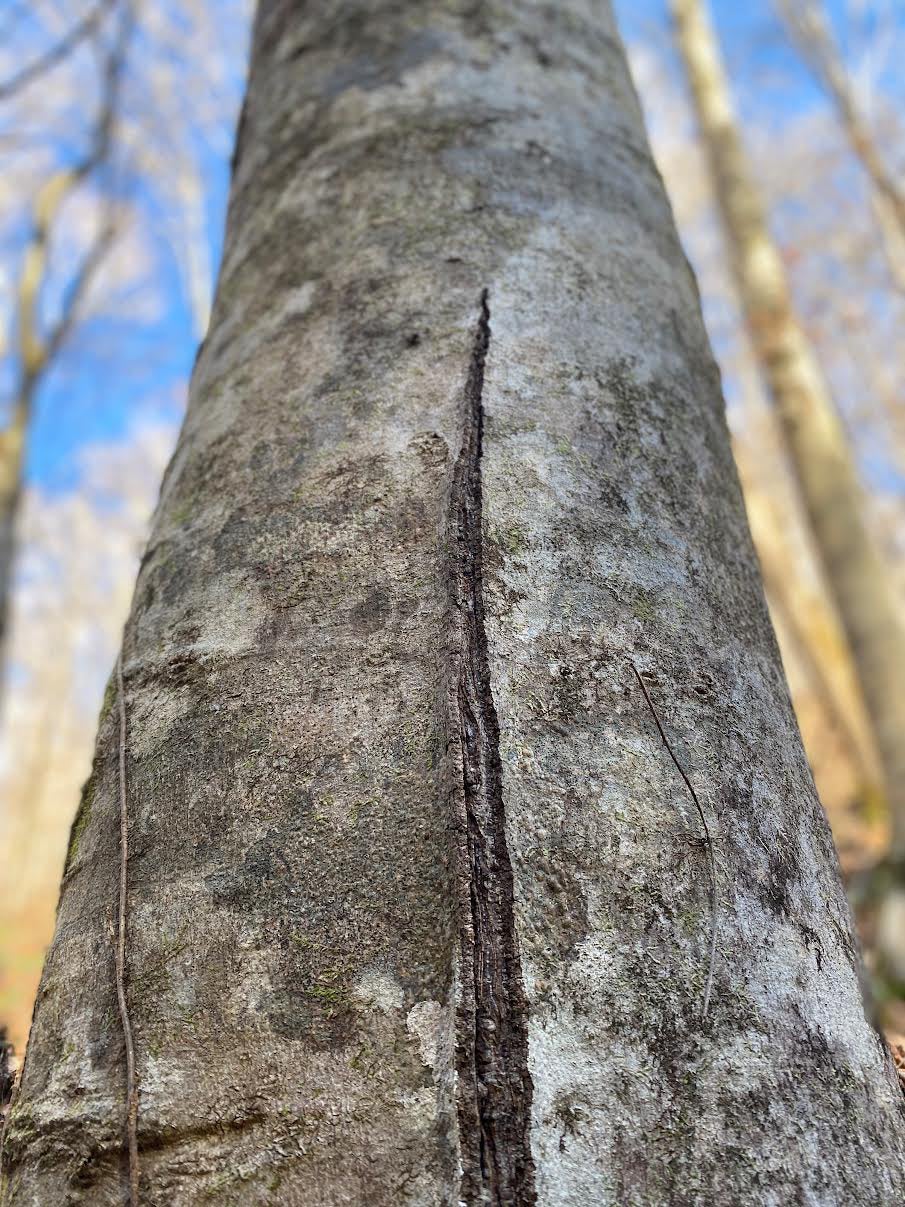Frost Crack: When you know it’s cold
Published 1:52 pm Friday, February 10, 2023

- Frost Crack occurs on thin barked trees such as this beech. This is an old wound that has healed over. Steve Roark photo
|
Getting your Trinity Audio player ready...
|
With the bitter sub-zero weather we had a few weeks ago, I’ve kept my eye open for a type of tree damage called frost crack, a long vertical split in the tree trunk. I didn’t find a fresh one but did find one or two cracks that had healed over.
Frost crack normally occurs on thin barked trees such as beech and especially sycamore. Several things have to line up just right for it to occur. Really cold daytime temperatures is the main thing, but the tree also has to get some direct late afternoon sun. The cracks usually form on the southwest face of the trunk, which receives the warmest sun rays of the day during the late afternoon. It occurs at that point often enough that another name for frost crack is “southwest canker”. Here’s how it goes: the trunk has been really cold for a couple of days, then gets warmed by some sun late in the day on that southwest section, and the wood near the surface expands as it warms like most things do. Then the sun goes down and there’s is a rapid drop in temperature and the outer wood cools and contracts faster than wood further in. This creates uneven tension that can release suddenly, sounding like a rifle shot and results in a long vertical split in the trunk.
Frost crack doesn’t occur in our area too often, but further north super cold temperatures happen more often and so do cracks. It happened in the Dakotas often enough that the Sioux Indians named the first new moon of the year “Moon of the Cold-Exploding Trees.” England had a freakish cold winter in 1683 when temperatures went below zero for several weeks and there were reports of trees exploding and falling over from severe frost cracks.
In most cases the tree is not seriously harmed by a frost crack, and is able to heal over and be fine. It is a wound however, and can allow a disease pathogen to get in and do some damage.
Steve Roark is a volunteer at Cumberland Gap National Historical Park.






